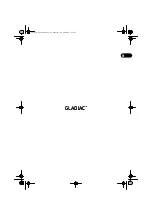
4
EXTERNAL POWER SUPPLY
An external power input terminal, J5, is used for the external power supply input. However, remember never to connect any
supply to these inputs so long as you have JP4, JP5, JP6 and JP7 installed. In case you want to use the external supply as
an input you must remove these 4 jumpers in order not to cause any conflict with the bus voltages. These jumpers are,
however, independent from each other. For instance if you would want to bring in only a +5V from the external supply and
continue to use the bus voltages for +12V, -12V, and +3.3V, you would only need to remove JP5. The list below identifies
which jumper is for which supply:
JP4 = -12V
JP5 = +5V
JP6 = +12V
JP7 = +3.3V
JP7 1-2 installed
è
3.3V from on-board regulator
JP7 2-3 installed
è
3.3V from the bus
JP7 not installed
è
3.3V from the external supply
The following diagram indicates the interconnection of the Unit-Under-Test voltages to the bus voltages and the external
voltages:
+5VE
ON-OFF
5V out to UUT
Circuitry
VIO to UUT
JP5
JP10
ON-OFF
Circuitry
+5V from the bus
+VIO from bus
As indicated, there will be conflict in case the external supply is connected while the jumper is still in place. This circuit is
repeated for each of the 4 voltages .
If you are using external power supplies do not forget to connect the Ground (GND) signals between the system and the
supply. If your external power supply outputs are not isolated, make sure the ground of the PC (containing the extender
board) and the ground of the power supply are at the same voltage phase/level with respect to a common point, before
connecting the GND signal.
If making current measurements in +5V, be sure to remove JP10 if the VIO and +5V on your
board are on the same voltage plane.
Artisan Technology Group - Quality Instrumentation ... Guaranteed | (888) 88-SOURCE | www.artisantg.com








































